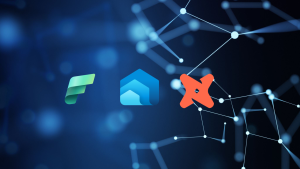As of 12th January 2024, the beta exam for the new Microsoft Certified: Fabric Analytics Engineer Associate is now available. This is the link to the certification page exam details page I covered the exam in a previous blog post (and video) available here which breaks down the exam topics.
As I previously did with the DP-500 Enterprise Data Analyst certification, I’ve listed each of the skills measured and linked to what I believe to be the relevant topic.
There are the Learn modules which cover aspects of the exam, you can find those in the Two Ways to Prepare: Self Paced Fabric related self-paced training available here
Pragati Jain has listed links to the various Learn modules in a great blog here Data Mozart (AKA Nikola Ilic) has a section dedicated to the DP600 on his blog, so check that out here Kevin Chant has extensive blogs around DP600, the latest one is here
I will revisit this blog often to update each skills measured relevant links.
Identify requirements for a solution, including components, features, performance, and capacity stock-keeping units (SKUs) Learn Recommend settings in the Fabric admin portal Learn Choose a data gateway type Learn Create a custom Power BI report theme Learn
Implement workspace and item-level access controls for Fabric items Learn Learn Implement data sharing for workspaces, warehouses, and lakehouses Learn Manage sensitivity labels in semantic models and lakehouses Learn Configure Fabric-enabled workspace settings Learn Manage Fabric capacity Learn
Implement version control for a workspace Learn Create and manage a Power BI Desktop project (.pbip) Learn Plan and implement deployment solutions Learn Perform impact analysis of downstream dependencies from lakehouses, data warehouses, dataflows, and semantic models Learn Deploy and manage semantic models by using the XMLA endpoint Learn Create and update reusable assets, including Power BI template (.pbit) files, Power BI data source (.pbids) files, and shared semantic models Templates PBIDS Shared Semantic Models
Ingest data by using a data pipeline, dataflow, or notebook Learn Learn Learn Create and manage shortcuts Learn Implement file partitioning for analytics workloads in a lakehouse Learn Create views, functions, and stored procedures Learn Enrich data by adding new columns or tables
Choose an appropriate method for copying data from a Fabric data source to a lakehouse or warehouse Copy data by using a data pipeline, dataflow, or notebook Learn Learn Add stored procedures, notebooks, and dataflows to a data pipeline Learn Learn Schedule data pipelines Learn Schedule dataflows and notebooks Community
Implement a data cleansing process Learn Implement a star schema for a lakehouse or warehouse, including Type 1 and Type 2 slowly changing dimensions Learn Learn Implement bridge tables for a lakehouse or a warehouse Learn Denormalize data Community Aggregate or de-aggregate data Merge or join data Learn Identify and resolve duplicate data, missing data, or null values Learn Convert data types by using SQL or PySpark Filter data Learn
Identify and resolve data loading performance bottlenecks in dataflows, notebooks, and SQL queries Implement performance improvements in dataflows, notebooks, and SQL queries Identify and resolve issues with Delta table file sizes Learn Learn
Choose a storage mode, including Direct Lake Learn Learn Identify use cases for DAX Studio and Tabular Editor 2 Learn Community Implement a star schema for a semantic model Learn Implement relationships, such as bridge tables and many-to-many relationships Learn Write calculations that use DAX variables and functions, such as iterators, table filtering, windowing, and information functions Learn Learn Learn Learn Learn Implement calculation groups, dynamic strings, and field parameters Learn Learn Learn Design and build a large format dataset Learn Design and build composite models that include aggregations Learn Learn Community Implement dynamic row-level security and object-level security Learn Learn Community Validate row-level security and object-level security Learn
Implement performance improvements in queries and report visuals Community Improve DAX performance by using DAX Studio Community Community Optimize a semantic model by using Tabular Editor 2 Learn Implement incremental refresh Learn
Implement descriptive and diagnostic analytics Integrate prescriptive and predictive analytics into a visual or report Profile data Learn
Query a lakehouse in Fabric by using SQL queries or the visual query editor Learn Query a warehouse in Fabric by using SQL queries or the visual query editor Learn Learn Connect to and query datasets by using the XMLA endpoint Learn
Continue Reading






1 thought on “DP-600 Fabric Analytics Engineer Skills Measured Breakdown and Resource Links”
Comments are closed.